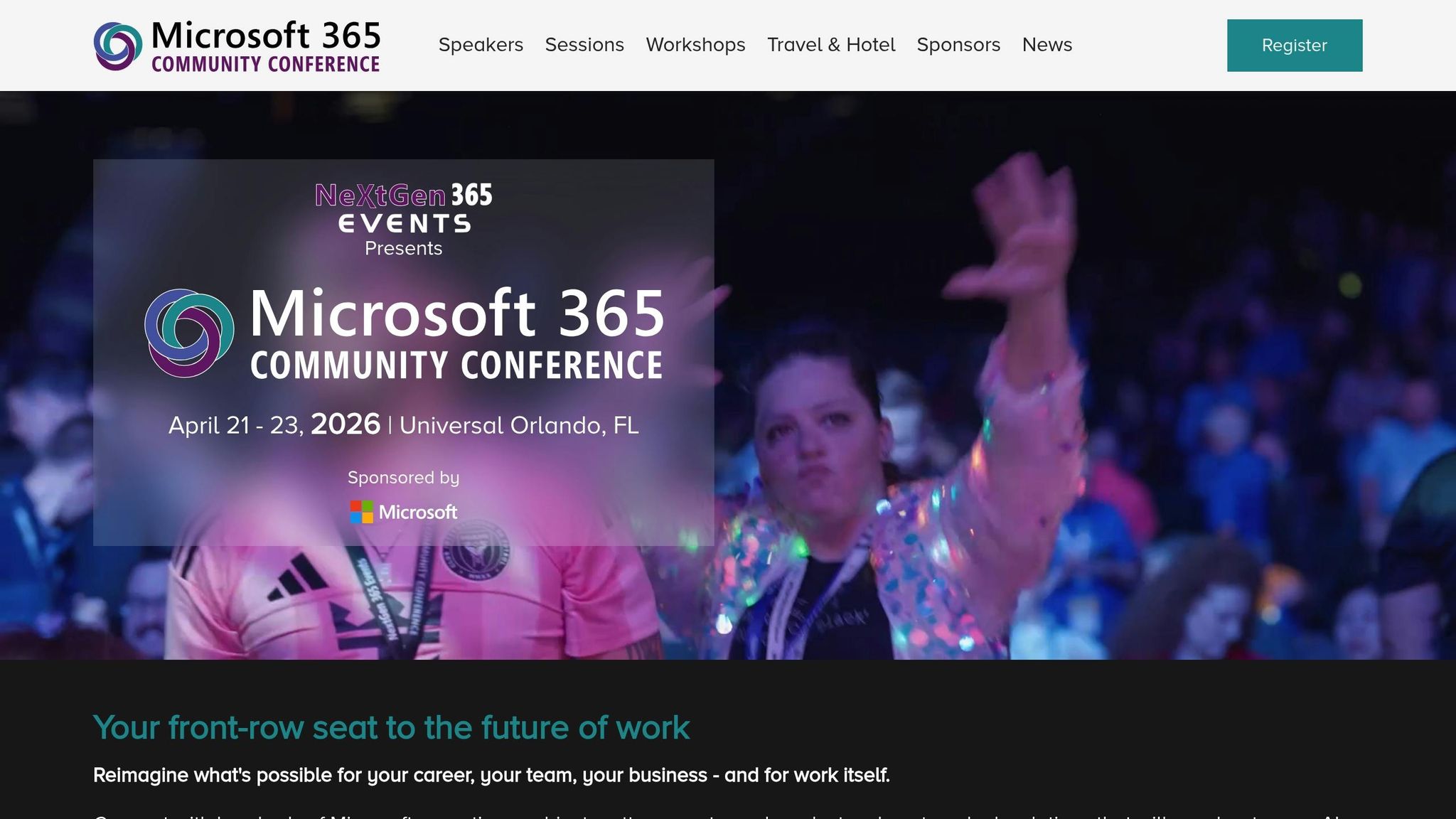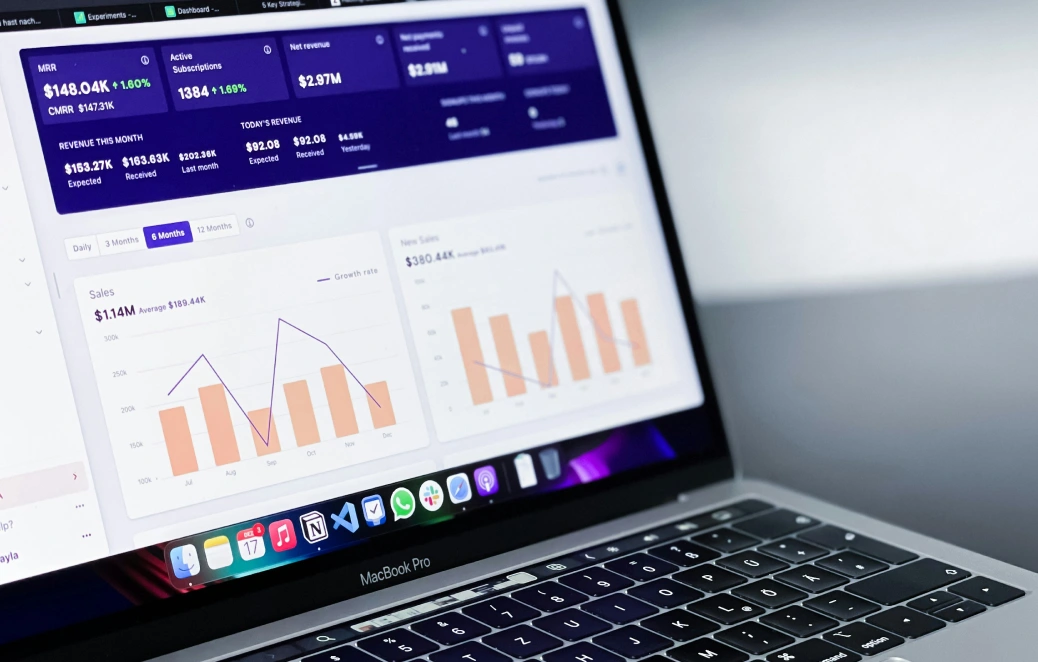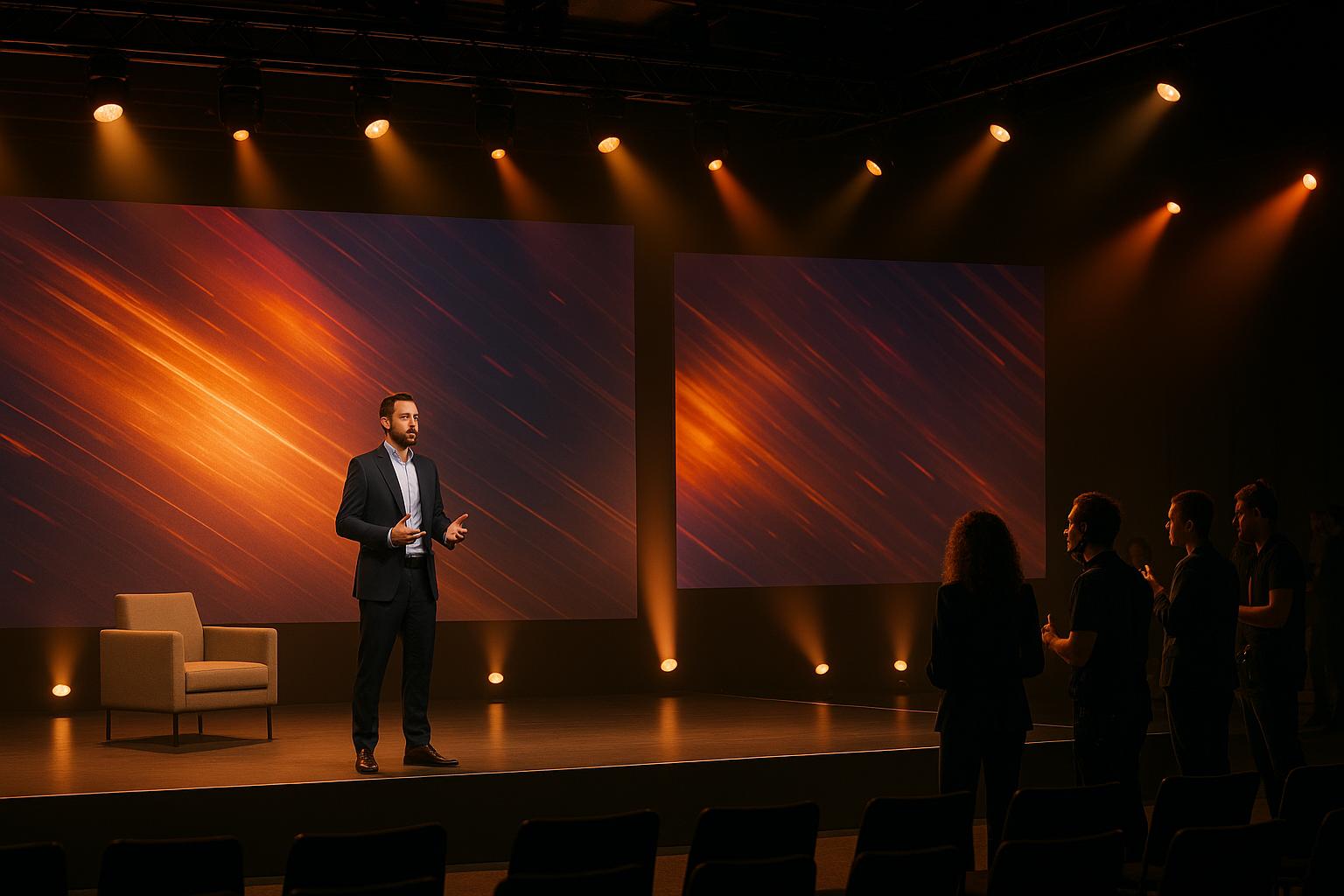Top AI in Corporate Communications for Conferences

Chief Executive Officer

AI is transforming how corporate conferences handle communication challenges. From managing multi-language audiences to delivering tailored content, these tools simplify operations and improve attendee experiences. Here's what you need to know:
- Personalized Messaging: AI uses attendee data to send targeted updates and recommendations.
- Real-Time Engagement: Chatbots answer questions instantly, while sentiment analysis helps organizers respond to audience feedback on the fly.
- Automated Workflows: Tasks like scheduling, follow-ups, and resource management are handled efficiently.
- Analytics: AI tracks engagement and measures ROI, helping refine future communication strategies.
- Key Tools: Chatbots, real-time transcription, translation, and analytics platforms are leading the way.
AI not only makes conferences more efficient but also enhances how attendees interact and connect. The result? A smoother experience for everyone involved.
Leveraging AI for communications | Microsoft 365 Community Conference

Key Benefits of AI for Conference Communications
AI is reshaping how conferences communicate, offering practical improvements in four key areas. These advancements strengthen the connection between organizers and attendees while delivering measurable results. Let’s dive into how AI is making an impact.
Personalized and Precise Messaging
AI leverages registration data and engagement trends to deliver highly targeted content. One standout capability is dynamic content adaptation, where AI tailors messaging based on attendee profiles. For instance, executives might get quick, high-level updates, while specialists receive in-depth guides.
Timing is another area where AI shines. By analyzing engagement patterns, it can schedule messages for optimal impact - like reaching East Coast attendees in the morning and West Coast participants later in the day. This approach not only boosts open rates but also reduces the risk of overwhelming attendees with irrelevant information.
Through behavioral segmentation, AI detects patterns in attendee behavior, enabling it to make proactive and personalized recommendations that resonate with individual preferences.
Real-Time Engagement Tools
AI-powered tools bring a new level of interactivity to events, responding to attendee needs on the spot. These systems can manage thousands of interactions simultaneously without sacrificing quality.
Take intelligent chatbots, for example. They handle common questions about schedules, locations, and logistics, while seamlessly escalating more complex issues to human staff. Over time, they get smarter, offering even better support.
Live sentiment monitoring is another game changer. AI analyzes social media posts, chat messages, and surveys to gauge attendee mood in real time. If a session or venue issue sparks dissatisfaction, organizers can address it before it becomes a bigger problem.
With adaptive polling, AI adjusts questions dynamically based on previous responses. New attendees might see introductory questions, while seasoned professionals get more advanced ones - ensuring everyone feels engaged.
Automated Workflow Management
AI takes over repetitive tasks, giving staff more time to focus on strategic priorities. Its automation capabilities go beyond basic scheduling to include more complex processes.
For instance, smart content distribution ensures that the right information reaches the right people at the perfect time. AI handles everything from timing to formatting and delivery channels. Intelligent scheduling coordination simplifies managing speaker updates, venue changes, and attendee notifications all at once. Meanwhile, resource allocation optimization predicts when and where support staff will be needed most, ensuring smooth operations.
Even after sessions end, AI keeps the momentum going with automated follow-up sequences, sending personalized messages and connection suggestions to maintain engagement.
As these workflows become more efficient, AI analytics step in to measure and refine processes, ensuring continuous improvement.
Communication Performance Analytics
AI delivers detailed insights into how communications are performing, going far beyond traditional metrics like open rates or click-through rates. It tracks engagement depth and predicts attendee satisfaction by analyzing how people interact with content.
One standout feature is ROI attribution tracking, which connects communication efforts to tangible outcomes. AI maps the attendee journey from the first email to post-event follow-ups, helping organizers pinpoint which messages and channels are driving results like lead generation or partnership opportunities.
From there, continuous optimization recommendations help fine-tune future efforts. By analyzing attendee responses and engagement patterns, AI suggests adjustments to messaging frequency, content design, and delivery timing. Over time, these insights build on each other, making every event more effective than the last.
Top AI Tools and Applications for Conferences
The use of AI in conferences has come a long way, offering solutions that make events smoother for organizers and more engaging for attendees. From simplifying communication to enhancing accessibility, these tools are transforming the way conferences are planned and experienced.
AI Chatbots for Attendee Support
AI chatbots are like having a personal assistant available 24/7 at conferences. They can instantly answer questions about session schedules, booth locations, speaker details, and event maps. Whether attendees prefer typing or speaking their queries, these bots handle it all, even when interaction volumes are high.
What makes these chatbots even more effective is their ability to adapt. They provide context-aware responses based on an attendee's role or location within the venue, making the experience highly personalized. By automating routine inquiries, these tools free up staff to focus on more pressing tasks.
Speech-to-Text and Live Transcription Tools
Real-time transcription tools are a game-changer for accessibility. These AI-powered tools convert spoken words into text on the spot, providing live captions during presentations. This is especially helpful for attendees with hearing impairments or those who want to revisit the content later. Knowing a transcript will be available lets participants fully immerse themselves in the session without worrying about missing details.
AI-Driven Analytics Platforms
AI analytics platforms give conference organizers a treasure trove of insights. By analyzing attendee interactions and engagement data, these tools highlight what’s working and what isn’t. Organizers can use this information to make quick adjustments during the event and refine strategies for future ones. It’s like having a real-time feedback loop to improve the experience on the go.
Real-Time Translation and Localization
For international audiences, real-time translation tools are indispensable. These AI-powered systems convert spoken presentations into multiple languages in real time, breaking down language barriers and ensuring everyone is on the same page. This technology helps create a more inclusive atmosphere, where key messages resonate with a diverse audience.
Corporate Optics and Prompts.ai Integration

Taking things a step further, Corporate Optics combines its tools with Prompts.ai to simplify the nitty-gritty of event planning. From automating agenda creation to assisting speakers with preparation, this integration streamlines the entire process. It also provides real-time performance insights, helping organizers tweak strategies mid-event and enabling speakers to fine-tune their presentations based on audience reactions.
sbb-itb-ae35a94
Implementation Strategies for AI in Conference Communications
Bringing AI into conference communications requires careful planning and a practical approach. The goal is to create a clear plan that addresses technical needs, privacy concerns, and team preparedness while ensuring the transition is smooth for everyone involved.
Step-by-Step Integration Guide
Start by evaluating your current communication setup. Take a close look at your workflows, identify any bottlenecks, and figure out which tasks consume the most resources. This initial assessment will help you pinpoint which AI tools can make the biggest difference.
Next, define your goals for using AI. Are you looking to speed up responses to attendee questions? Maybe you want to improve accessibility with live transcription or boost engagement with tailored messaging. Setting specific objectives will help you choose the right tools and measure their success.
It’s often best to begin with a small pilot project rather than rolling out multiple AI solutions at once. Focus on one or two areas where AI can have an immediate impact - like using chatbots for attendee support or adding speech-to-text capabilities for key sessions. This gives your team time to learn and adapt without overwhelming existing processes.
Make sure your event data is well-organized. AI tools work best when they have access to clean and structured information, such as speaker bios, session schedules, FAQs, and past communication records. Preparing this data in advance will set your tools up for success.
Integration is another critical step. Many organizations rely on platforms for event management, CRMs, and communication tools, so your new AI solutions must work seamlessly with these existing systems. Proper integration ensures smooth workflows and real-time insights without disrupting current operations.
Data Privacy and Ethical Considerations
Once your integration plan is in place, shift your focus to protecting data and maintaining ethical standards. Privacy is a major concern for many businesses, with 43% expressing worries about becoming overly reliant on AI. On the flip side, 65% of consumers are more likely to trust companies that use AI responsibly, showing that transparency and ethical practices can build trust.
Start by establishing clear data governance policies. Define what data you’ll collect, how it will be used, and how long it will be stored. For conference communications, this might include data from chatbot interactions, session transcriptions, and engagement analytics.
Your AI strategy should also comply with privacy laws like GDPR and CCPA, as well as any industry-specific rules. Use data minimization practices, allow attendees to opt out of AI features, and clearly explain how their data will improve their conference experience.
Transparency is crucial. Let both your team and attendees know when AI is being used. For instance, label chatbot responses as AI-generated or note that session transcriptions are automated. Regular audits can help you maintain ethical standards, catch biases, and ensure your AI tools are inclusive and accessible.
Training and Adoption Best Practices
While safeguarding data is essential, preparing your team to use AI effectively is just as important. Change can be intimidating, especially if there are concerns about job security or unfamiliarity with the new tools.
Address these concerns by providing hands-on training in a safe environment. Create sandbox setups where your team can experiment with AI tools using data from past events. This hands-on experience helps build confidence and uncovers potential issues before full implementation.
Develop training programs that cover both the technical and strategic aspects of AI. Your team should know not only how to use the tools but also when to rely on them and how to interpret their outputs. For example, staff should understand how to escalate issues from AI chatbots to human support and use analytics to improve future events.
Assign clear roles for managing AI tools, and designate team members as AI champions to provide ongoing support and share best practices.
Finally, adopt a mindset of continuous improvement. AI technology evolves quickly, so schedule regular training updates, encourage experimentation with new features, and set up feedback loops for your team. Track outcomes like faster response times, higher attendee satisfaction, better accessibility, and cost savings from automation. These metrics will help you assess the value of your AI investment and guide future adjustments.
AI Tools Comparison Analysis
Expanding on the earlier discussion about the advantages of AI, let’s dive into a detailed analysis of tools tailored for conference communications. Picking the right tools involves weighing their benefits and limitations. Below, you’ll find a comparison table and a breakdown of how these tools can make a difference in conference settings.
Comparison Table
| Tool/Platform | Main Use Case | Key Advantages | Limitations | Best Fit Scenarios |
|---|---|---|---|---|
| AI Chatbots | Attendee support and instant Q&A | Operates 24/7 and handles multiple queries at once | Limited to pre-programmed responses; struggles with complex or nuanced questions | Large events with frequent attendee inquiries |
| Speech-to-Text Tools | Live transcription and accessibility | High transcription accuracy; supports multiple languages | Impacted by background noise, accents, and requires stable internet | Keynotes, panel discussions, and accessibility-focused events |
| AI Analytics Platforms | Engagement tracking and measurement | Quickly processes data, identifies patterns, and provides actionable insights | Needs substantial data for accuracy; requires detailed setup and integration | Multi-day conferences, recurring events, and ROI-focused organizations |
| Real-Time Translation | Multilingual communication | Instantly translates across many languages, bridging language barriers | May miss cultural nuances, struggle with technical jargon, or experience occasional delays | International events with diverse audiences |
| Corporate Optics & Prompts.ai | AI-powered event production | End-to-end management with Emmy-level production quality and AI engagement | Custom pricing and implementation require consultations | High-budget corporate events, executive meetings, and award ceremonies |
Key Insights
AI chatbots shine when it comes to attendee support, offering quick responses and scalability for large events. They deliver excellent value for events with frequent inquiries but are limited by their reliance on pre-programmed responses, making them less suited for complex questions.
Speech-to-text tools stand out for improving accessibility by providing real-time transcriptions. These tools are particularly valuable for keynotes and panels, though their performance can be hindered by poor audio quality or strong accents. Investing in quality audio equipment can mitigate these challenges.
For organizations that prioritize data-driven decisions, AI analytics platforms are indispensable. They help track engagement and provide insights that can shape future events. However, they require a robust setup process and sufficient data to deliver accurate results.
Real-time translation tools are a game-changer for international conferences, offering instant language translation to accommodate diverse audiences. However, they can sometimes miss cultural nuances or technical terms, which might require additional preparation or human oversight.
Comprehensive solutions like Corporate Optics & Prompts.ai combine AI capabilities with high-quality event production. These services are ideal for high-profile events but come with a custom pricing model that typically suits larger budgets.
Considerations for Implementation
The complexity of implementation varies widely across tools. Chatbots are relatively easy to deploy, requiring only basic training data. Analytics platforms, on the other hand, demand more extensive setup, including data integration and staff training. Real-time tools like speech-to-text and translation services often need reliable internet and proper configuration to perform effectively.
Scalability is another critical factor. AI chatbots and translation tools can handle growing attendee numbers with ease, ensuring consistent performance. Analytics platforms, meanwhile, improve as they process more data, offering deeper insights over time.
Integration with existing event management systems is also worth evaluating. Some tools come with plug-and-play APIs, while others might need custom development. For example, Corporate Optics’ partnership with Prompts.ai highlights how AI can seamlessly integrate with professional event production.
Tailoring Solutions to Objectives
Your choice of tools should align with your event’s goals. If cutting costs is a priority, chatbots are an excellent starting point. For events focused on accessibility, speech-to-text solutions are invaluable. Organizations aiming for long-term improvements in communication might consider analytics platforms, while translation tools are essential for international audiences.
Training requirements also differ. Chatbots generally need minimal staff training, while analytics platforms may demand advanced data interpretation skills. Translation tools might benefit from cultural sensitivity training, and comprehensive solutions like those from Corporate Optics require coordination across multiple teams.
Conclusion
AI has transformed how organizations handle corporate conference communications, replacing outdated practices with smarter, data-driven tools that deliver tailored, accessible, and measurable engagement. The tools we've discussed highlight that effective conference communication now hinges on incorporating technology to create more impactful experiences for attendees.
Companies adopting AI-powered strategies are seeing tangible improvements in satisfaction, engagement, and operational efficiency. Tools like speech-to-text software enhance accessibility, while AI chatbots offer scalable, instant support. Analytics platforms convert raw data into clear, actionable insights, helping shape future strategies, and real-time translation brings a global audience closer together by breaking language barriers.
These AI tools work together to form a unified system where each element enhances the others. For example, data from chatbot interactions can feed into analytics platforms, providing valuable insights, while speech-to-text technology supports both accessibility and content analysis. This interconnected approach ensures that every tool contributes to a stronger overall communication framework.
Adopting AI doesn’t have to be overwhelming. A step-by-step implementation plan allows for proper training, testing, and budget alignment. This phased approach ensures a smoother transition and lays the groundwork for ongoing improvements and stronger connections with your audience.
Organizations that embrace AI-driven communication strategies today will gain a clear edge. They’ll boost engagement, fine-tune their methods, and build lasting relationships with their audiences. The real question isn’t whether to integrate AI into conference communications but which tools to prioritize and how soon you can begin reshaping your approach.
FAQs
How does AI enhance attendee engagement and satisfaction at corporate conferences?
AI enhances attendee engagement and satisfaction by creating customized experiences that align with individual preferences. For instance, tools like AI-powered matchmaking help attendees connect with the right people, while real-time feedback analysis enables instant input, making events more engaging and interactive.
Moreover, AI-driven platforms monitor engagement metrics throughout the event, giving organizers valuable insights to refine future conferences. Features like personalized content suggestions and intelligent networking options ensure participants have a more rewarding and enjoyable experience overall.
What should I consider when adding AI tools to conference communication systems?
When bringing AI tools into conference communication systems, it's important to start by pinpointing your goals. Are you looking to boost audience engagement? Or maybe you want to make real-time interactions smoother? Clearly defining these objectives will guide your choices.
Choose user-friendly, ready-to-use solutions that align with your needs and integrate well with your current workflows. Make sure the tools can adapt and grow with your requirements over time. Also, don't underestimate the importance of maintaining high-quality data - it plays a key role in ensuring the AI performs effectively.
By blending AI's capabilities with human expertise, you can improve communication efficiency and deliver a smooth, enjoyable experience for everyone attending.
How do AI tools for real-time translation and transcription improve accessibility and inclusivity at global conferences?
AI-powered tools for real-time translation and transcription are transforming how international conferences operate by eliminating language barriers. These tools deliver live subtitles and transcripts in various languages, ensuring that everyone in the audience can follow along, no matter their native tongue.
This technology promotes a more inclusive environment, helping people from diverse linguistic and cultural backgrounds connect and communicate seamlessly. It also plays a crucial role in improving accessibility for individuals with hearing impairments, making events more welcoming and equitable for all participants.
Related Blog Posts









